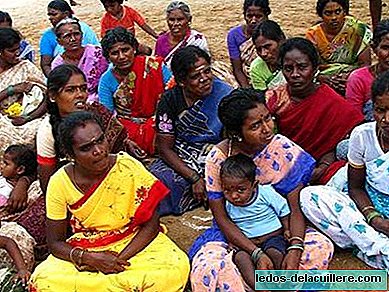
A program developed in India shows that Women's support groups can reduce deaths in the neonatal period by half in the communities that suffer the most, the most disadvantaged. Access to information and support saves lives.
The simple fact of meeting to discuss the problems of pregnancy and newborn care, to receive information and learn resources is a good strategy to tackle neonatal mortality in the most disadvantaged communities.
Reports from organizations such as UNICEF indicate that about 80% of maternal deaths in the world, mostly in poor countries, could have been avoided if women had had access to maternity services and basic health care. This could be a first step, access to support and information.
The project has been launched by University College London (United Kingdom) in some communities of the poorest Indian provinces, and its results appear in the magazine 'The Lancet'.
In this Asian country the rates of maternal mortality (20%), of children under 5 years (21%) and neonatal (25%) are tremendous, let's think that of every 100 newborn babies die 25. That is why there is a great need for Find profitable strategies to reduce these rates.
One of those that is outlined as useful is that of the support groups, tested in 2004 in a Nepalese community with a significant impact on neonatal mortality.
The support groups, of course, are much more effective the more assistants you have, and in the case of some communities, it was not only pregnant women but also teenagers, old women and some men. That its effect reaches a large part of the members of the community is fundamental.
After two years of experience, neonatal mortality was reduced by 45% among women in support groups compared to those who were not part of them. In addition, cases of moderate postpartum depression fell 57% in participants and maternal mortality 30%.
This reduction in mortality is due in large part to improvement in hygiene and care, as in the healing of the cord or in the delivery assistance.
They are hopeful data without a doubt, although they require the active presence of the population. The implementation of this program in a community in Bangladesh, carried out by this same team, did not achieve the same results. Among the possible causes, researchers point to lower coverage and recruitment of women.
In any case, I believe that we must take the positive from experiences in India and consider that support groups in disadvantaged communities save lives of pregnant women, newborns and children.
Not forgetting that effective medical resources and infrastructure are also needed here to provide healthy conditions where mothers give birth and raise their babies.












